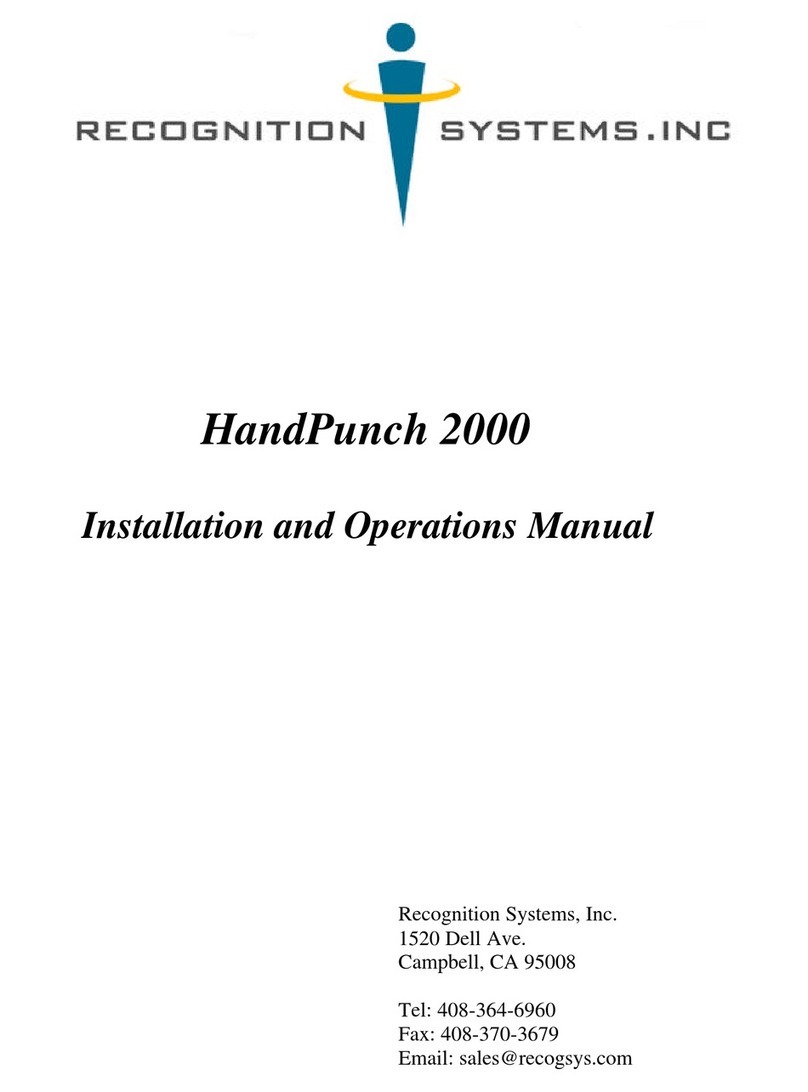
HandKey II Installation and Operation Manual
Revision 2.0 Page 7
Introduction
HandKey II
The HandKey II is Recognition Systems’ fourth generation biometric access control
Hand Reader1. The Hand Reader records and stores the three-dimensional shape of the
human hand for comparison and identity verification. Upon verification, the Hand
Reader produces an output that can unlock a door, send card format data to an access
control panel, or communicate with a host computer. The Hand Reader also has
auxiliary inputs and outputs that can be used to control other systems such as CCTV
cameras and alarms.
Biometrics
Biometrics is a term describing the automatic measurement and comparison of human
characteristics. While its origins are ancient, the evolution of advanced scanning and
microprocessor technology brought biometrics into everyday life. Electronic hand
geometry technology first appeared in the 1970s. Recognition Systems Inc., founded
in 1986, built the first mass-produced hand geometry readers and made biometric
technology affordable for the commercial market. Today, Recognition Systems’
products are in use in every imaginable application from protecting cash vaults to
verifying parents in obstetric wards.
Principle of Operation
The Hand Reader uses low-level infrared light, optics, and a CCD (IC chip) camera to
capture a three-dimensional image of the hand. Using advanced microprocessor
technology, the Hand Reader converts the image to an electronic template. It stores the
template in a database with the user’s ID number.
To gain access, the user enters his or her ID number at the Hand Reader’s keypad or
uses an external card reader. The Hand Reader prompts the user to place his or her
hand on the reader’s platen2. The Hand Reader compares the hand on the platen with
the user’s unique template. If the images match, the Hand Reader unlocks the door or
sends the user’s ID number to a third-party access control panel for processing.
The HandKey II Reader
The Hand Reader is an intelligent access control system that can operate as a stand-
alone unit, in a network with other Hand Readers, or in a network with a host
computer. Refer to Figure 1-1 when reviewing the information in this section.
1. For the sake of using a consistent name throughout the manual, the HandKey II is referred to as
the Hand Reader for the remainder of this manual.
2. The Platen is the flat surface at the base of the Hand Reader (see Figure 1-1). This is where users
place their hands for enrollment and verification. It has guide pins to position the fingers during
use.




























